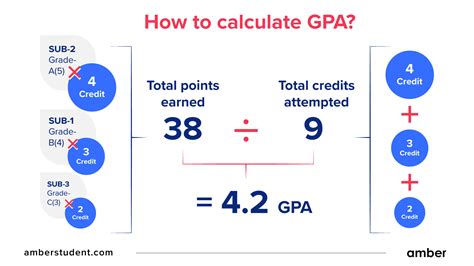Introduction

Know Your Motivation: Importance of GPA
In the ever-competitive academic landscape, Grade Point Average (GPA) serves as a crucial metric for students. It reflects their overall academic performance and plays a significant role in university admissions, scholarship awards, and job applications. For students, calculating their GPA accurately is essential to track their progress, set achievable goals, and stay on top of their academic responsibilities.
Percentage vs. GPA: Understanding the Conversion
While many educational systems use percentages to assess student achievement, universities and employers often utilize GPA as a standardized measure of academic performance. To effectively compare applicants from diverse grading systems, it is important to understand how to convert percentages to GPA.
Step-by-Step Guide to Calculating GPA from Percentage
Step 1: Determine the Grading Scale
Different educational institutions use varying grading scales, ranging from 0-100 to A-F. It is crucial to identify the specific grading scale used in your institution.
Step 2: Convert Percentages to Letter Grades (Optional)
If your institution uses a letter grading system, you may need to convert your percentages to letter grades first. Refer to your institution’s grading scale or consult with your instructor for this information.
Step 3: Assign Numerical Values to Letter Grades
Once you have determined your letter grades, assign numerical values to each grade based on the institution’s grading scale. For example, in a 0-4 scale, A = 4, B = 3, C = 2, D = 1, and F = 0.
Step 4: Calculate the Weighted Average
Multiply the numerical value of each grade by the number of credits associated with the course. For instance, if you earn an A (4) in a 3-credit course, your weighted grade is 4 * 3 = 12. Repeat this calculation for all your courses.
Step 5: Calculate the GPA
Finally, divide the total weighted grade by the total number of credits attempted to obtain your GPA. For example, if you have earned a total weighted grade of 120 from 30 attempted credits, your GPA is 120 / 30 = 4.0.
Example
Consider a student who has earned the following grades:
- Course 1: 85% (A) – 3 credits
- Course 2: 78% (B) – 4 credits
- Course 3: 92% (A) – 2 credits
Steps:
- Determine the grading scale: 0-100
- Convert percentages to letter grades: A, B, A
- Assign numerical values: A = 4, B = 3, A = 4
- Calculate weighted grades: 4 * 3 = 12, 3 * 4 = 12, 4 * 2 = 8
- Calculate GPA: (12 + 12 + 8) / (3 + 4 + 2) = 3.75
Tips for Calculating GPA from Percentage
- Accuracy is Paramount: Ensure accuracy in converting percentages and assigning numerical values to avoid errors in calculating GPA.
- Use Technology: Utilize online tools or spreadsheets to make calculations easier and minimize the risk of mistakes.
- Understand Your Institution’s Grading Policy: Familiarize yourself with your institution’s grading policies, including any weighting or scaling factors that may apply.
- Seek Guidance: If you encounter any difficulties or have specific questions, consult with your academic advisor or instructor.
Effective Strategies for Maintaining a High GPA
1. Set Realistic Goals: Set achievable academic targets based on your individual strengths and weaknesses.
2. Time Management: Manage your time wisely to allocate adequate study hours for each subject.
3. Active Learning: Engage in active learning techniques such as attending lectures, taking notes, and participating in class discussions.
4. Stay Organized: Keep track of assignments, deadlines, and study materials to stay organized and reduce stress.
5. Seek Help When Needed: Reach out to your instructors, classmates, or a tutor for assistance when necessary.
FAQs
1. Does GPA always reflect academic ability?
GPA is a standardized measure of academic performance, but it does not always capture the full extent of a student’s abilities.
2. What is a good GPA?
A good GPA varies depending on the institution, grading scale, and individual expectations. However, a GPA of 3.5 or higher is generally considered competitive.
3. How can I improve my GPA?
Improving GPA requires consistent effort, effective study habits, and focus on understanding concepts rather than memorization.
4. What factors can affect GPA?
GPA can be influenced by factors such as course difficulty, grading policies, and extra-curricular activities.
5. Is it possible to calculate GPA from a weighted grading scale?
Yes, if your institution uses a weighted grading scale, you can calculate GPA by multiplying the numerical value of each grade by the weighting factor before dividing by total credits.
6. Can I use my GPA to predict my performance at a future university?
While GPA is a strong indicator of academic potential, it is not the only factor that determines future success. Other factors such as extracurricular activities, leadership roles, and personal qualities also play a role.
Conclusion
Calculating GPA from percentage is a crucial skill for students to master. By understanding the conversion process and implementing effective strategies, students can effectively track their academic progress and take steps to enhance their GPA. Remember, maintaining a high GPA is not just about achieving numerical success, but about developing strong study habits, seeking knowledge, and striving for personal growth.
